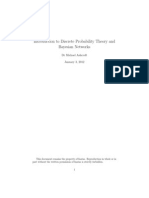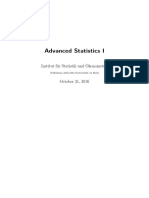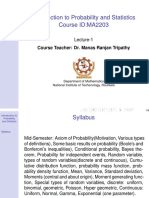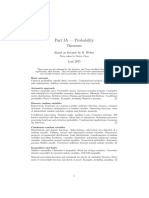0% found this document useful (0 votes)
7 views1 pageLecture Notes: Introduction To Probability Theory
Probability theory is the mathematical study of uncertainty and randomness, providing a framework for quantifying the likelihood of events. Key concepts include sample space, events, and probability functions, with types such as theoretical and experimental probability. Understanding these principles is crucial for informed decision-making and advanced topics in statistics and engineering.
Uploaded by
dilhanmacysCopyright
© © All Rights Reserved
We take content rights seriously. If you suspect this is your content, claim it here.
Available Formats
Download as DOCX, PDF, TXT or read online on Scribd
0% found this document useful (0 votes)
7 views1 pageLecture Notes: Introduction To Probability Theory
Probability theory is the mathematical study of uncertainty and randomness, providing a framework for quantifying the likelihood of events. Key concepts include sample space, events, and probability functions, with types such as theoretical and experimental probability. Understanding these principles is crucial for informed decision-making and advanced topics in statistics and engineering.
Uploaded by
dilhanmacysCopyright
© © All Rights Reserved
We take content rights seriously. If you suspect this is your content, claim it here.
Available Formats
Download as DOCX, PDF, TXT or read online on Scribd
/ 1







































































